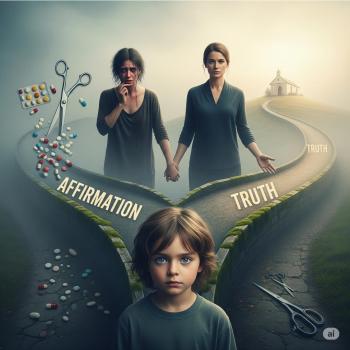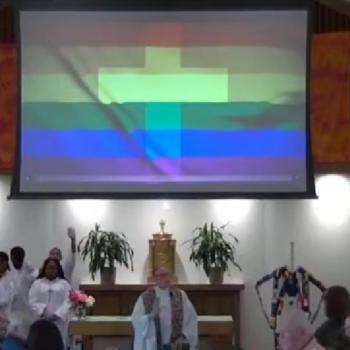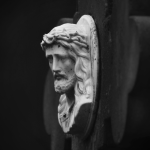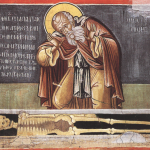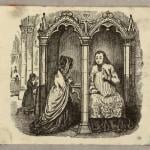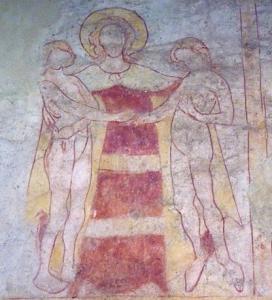 Guest writer: Pilgrim
Guest writer: Pilgrim
Introduction
Modern feminism, in its many forms, has brought attention to the injustices women have historically endured—political exclusion, domestic exploitation, and cultural marginalization. Yet as feminism evolved into more radical, postmodern expressions, it advanced visions of womanhood and equality that oppose the Catholic understanding of the human person.
While the Church at times failed in its practice, her doctrine offers a deeply rooted anthropology: one that affirms the equal dignity of man and woman while embracing their distinct vocations. Catholic tradition does not see sexual difference as a cause of oppression but as part of a divine design—wounded by sin, yet restored in Christ. Through Scripture and the thought of figures like St. Edith Stein, Sr. Prudence Allen, Alice von Hildebrand, and St. John Paul II, the Church has developed a vision of woman that reclaims her original vocation, recognizes the wounds of sin, and offers a path of redemption.
Creation and Equal Dignity
Genesis affirms man and woman are created together in God’s image: “God created man in His own image… male and female He created them” (Genesis 1:27). [1] From the beginning, their dignity is equal and their relationship is one of mutual gift. Pope John Paul II wrote: “From the very beginning, man and woman are seen as equal in dignity; their relationship is one of mutual giving” (Mulieris Dignitatem). [2]
This vision is not restricted to biology. St. Edith Stein observed that women are by nature naturally “to cherish, guard, protect, nourish, and advance growth,” whether as mothers, physicians, teachers, or religious (Stein, Essays on Woman). [3] John Paul II called this the “feminine genius”: a particular capacity to humanize the world through love, attentiveness, and care (Mulieris Dignitatem). [4]
The Wound of Sin
Genesis 3:16 speaks of the post-Fall distortion of the male–female relationship: “Your desire shall be for your husband, and he shall rule over you” (Gen. 3:16). [5] John Paul II interpreted this not as divine command but as a consequence of sin: “This ‘domination’ indicates the disturbance and loss of that fundamental equality” (Mulieris Dignitatem). [6]
Radical feminist Shulamith Firestone viewed female oppression as a biological inevitability stretching back to the animal kingdom (Firestone, The Dialectic of Sex). [7] In contrast, the Church maintains that oppression is real but not natural. Sr. Prudence Allen’s scholarship affirms that any framework which denies either equality or difference eventually collapses – either into domination or unisex erasure (Allen, The Concept of Woman). [8]
Redemption in Christ and Mary
Jesus’ treatment of women was radically restorative. He publicly affirmed and dignified them, counter to the norms of his time. “In Christ’s attitude towards women, one can find no trace of discrimination. Jesus made it clear that women are called to the inheritance of the Kingdom of God on equal terms with men” (Mulieris Dignitatem). [9]
Mary, the “New Eve,” cooperated freely and actively in God’s plan of salvation. Her fiat: “Let it be to me according to your word” (Luke 1:38). represents the full dignity of feminine consent and spiritual maternity. [10] Pope Benedict XVI writes: “In Mary, the theology of woman finds its loftiest expression. She is not subordinate but exalted; not marginalised but central” (Deus Caritas Est). [11]
The Feminine Genius and Woman’s Vocation
John Paul II described the feminine genius as a moral and spiritual strength rooted in a woman’s awareness that God entrusts the human person to her in a special way (Mulieris Dignitatem). [12] Motherhood, often viewed by radical feminism as restrictive, is instead a privileged vocation. “Motherhood implies from the beginning a special openness to the new person… In this openness, the woman discovers herself through a sincere gift of self” (Mulieris Dignitatem). [13]
Stein extends this to spiritual motherhood: “To be a woman is to be destined to be a mother – of children or of souls” (Essays on Woman). [14]
Alice von Hildebrand powerfully affirms this calling: “Spiritual motherhood is no less powerful than physical motherhood. A woman shapes the world through the people she forms with love and truth” (von Hildebrand, The Privilege of Being a Woman). [15]
Freedom Through Self-Gift
While modern feminism often equates freedom with autonomy, Catholic theology teaches that true freedom lies in the power to make a sincere gift of self. “Man cannot fully find himself except through a sincere gift of himself” (Gaudium et Spes). [16] John Paul II echoes this in his Letter to Women: “The Church gives thanks for every woman… for her sensitivity, her generosity, her fidelity, and her insight.” [17]
Responding to Feminist Concerns
To feminist objections, the Catholic Church offers a meaningful response:
- Motherhood does not limit freedom; it is a participation in God’s life-giving love.
- The Church is not patriarchal in essence; it honours the greatest of all human creatures—a woman, Mary—and defines dignity through holiness, not hierarchy.
- Sexual difference is not a source of inequality but of complementarity.
- True freedom lies in love and communion, not isolation.
Why Not the Priesthood for Women?
The Catholic Church’s teaching on a male-only priesthood is not rooted in notions of inequality or lack of dignity but in a theology of sacramental representation. The priest, in celebrating the Eucharist and administering the sacraments, acts “in persona Christi capitis” – in the person of Christ the Head. Since Jesus chose only men as His apostles and since the priest represents Christ as Bridegroom in relation to the Church as Bride, the Church understands this sacramental symbolism to be essential, not incidental.
This is not a matter of cultural bias or historical oversight; it is a faithful adherence to Christ’s own pattern and the Church’s unbroken tradition. As Pope John Paul II wrote: “The Church has no authority whatsoever to confer priestly ordination on women” (Ordinatio Sacerdotalis). [18]
Far from diminishing women, this teaching underscores the fact that sacramental roles do not define spiritual worth. The highest human creature in Catholic tradition is not a pope or bishop, but the Virgin Mary – woman, mother, and disciple. Holiness, not ordination, is the measure of greatness in the Kingdom of God. Many women saints, mystics, and martyrs have been spiritual authorities without being clerical ones. As the Church teaches, the vocations of men and women differ in form but not in value; both are indispensable for the flourishing of the Body of Christ. Priesthood is not a privilege denied, but a specific calling not given – a distinction of sacramental role, not of dignity, capacity, or holiness.
Conclusion: The Glory of Woman Redeemed
The Catholic Church’s vision of woman stands as a profound counter-narrative to many modern ideologies that either flatten gender distinctions or foment conflict between the sexes. Far from diminishing women, Catholic teaching holds that woman is a gift to humanity – equal in dignity, unique in vocation, and essential to the flourishing of the world. Rooted in the truth of creation, woman’s original dignity is not a nostalgic ideal but a living reality, wounded by sin but not erased. Original sin distorted the harmony of sexual difference, turning complementarity into domination and suspicion. Yet this is not the final word.
In Christ and through the Church’s ongoing witness, woman’s vocation is redeemed and exalted. The example of Mary, the New Eve, reveals the profound dignity of feminine cooperation in God’s plan of salvation – not passive submission but active, free, and loving participation. Countless women saints throughout history testify to the strength, wisdom, and sanctity that flow from embracing their God-given nature and calling. Their lives demonstrate that femininity and holiness are not opposing forces but inseparably united.
The Church does not call women to suppress their difference or to mimic men but to embrace and elevate their identity as bearers of life, love, and communion. True freedom is not found in autonomy or the denial of nature, but in the generous self-gift that mirrors the love of God Himself. Woman’s dignity is measured not by social status or power but by the order of love, which is the foundation of justice and charity.
In a world desperately in need of healing – from broken relationships, gender confusion, and loss of meaning – the Church offers a vision of womanhood that restores hope. It is a vision that honors the full personhood of women, affirms their equal place beside men, and calls them to be co-creators with God in building a society rooted in truth, beauty, and goodness. This vision invites all women to stand confidently in their unique and noble vocation, shining forth the feminine genius as a source of transformation for the Church and the world.
Thank you!
If you liked this article, please leave your comments below. I am very interested in your opinion on this topic.
Read The Latin Right’s other writing here.
Please visit my Facebook page and IM your questions (and follow my page) or topics for articles you would like covered.
Also, please subscribe my YouTube page for updates on upcoming articles.
References
- Sacred Scripture, Genesis 1:27 (RSV)
- John Paul II, Mulieris Dignitatem, §6
- Edith Stein, “Feminine Vocations,” in Essays on Woman, trans. Freda Mary Oben (ICS Publications, 1996), 244–45
- John Paul II, Mulieris Dignitatem, §30
- Sacred Scripture, Genesis 3:16 (RSV)
- John Paul II, Mulieris Dignitatem, §13
- Shulamith Firestone, The Dialectic of Sex: The Case for Feminist Revolution (Morrow, 1970), 2, 74
- Sr. Prudence Allen, The Concept of Woman, Vol. III: In Search for a Communion of Persons (Eerdmans, 2016), xiii–xiv
- John Paul II, Mulieris Dignitatem, §13
- Sacred Scripture, Luke 1:38 (RSV)
- Benedict XVI, Deus Caritas Est, §41
- John Paul II, Mulieris Dignitatem, §30
- John Paul II, Mulieris Dignitatem, §18
- Edith Stein, Essays on Woman, 268
- Alice von Hildebrand, The Privilege of Being a Woman (Ignatius Press, 2002)
- Vatican II, Gaudium et Spes, §24
- John Paul II, Letter to Women (1995), Introduction
- John Paul II, Ordinatio Sacerdotalis, §4





